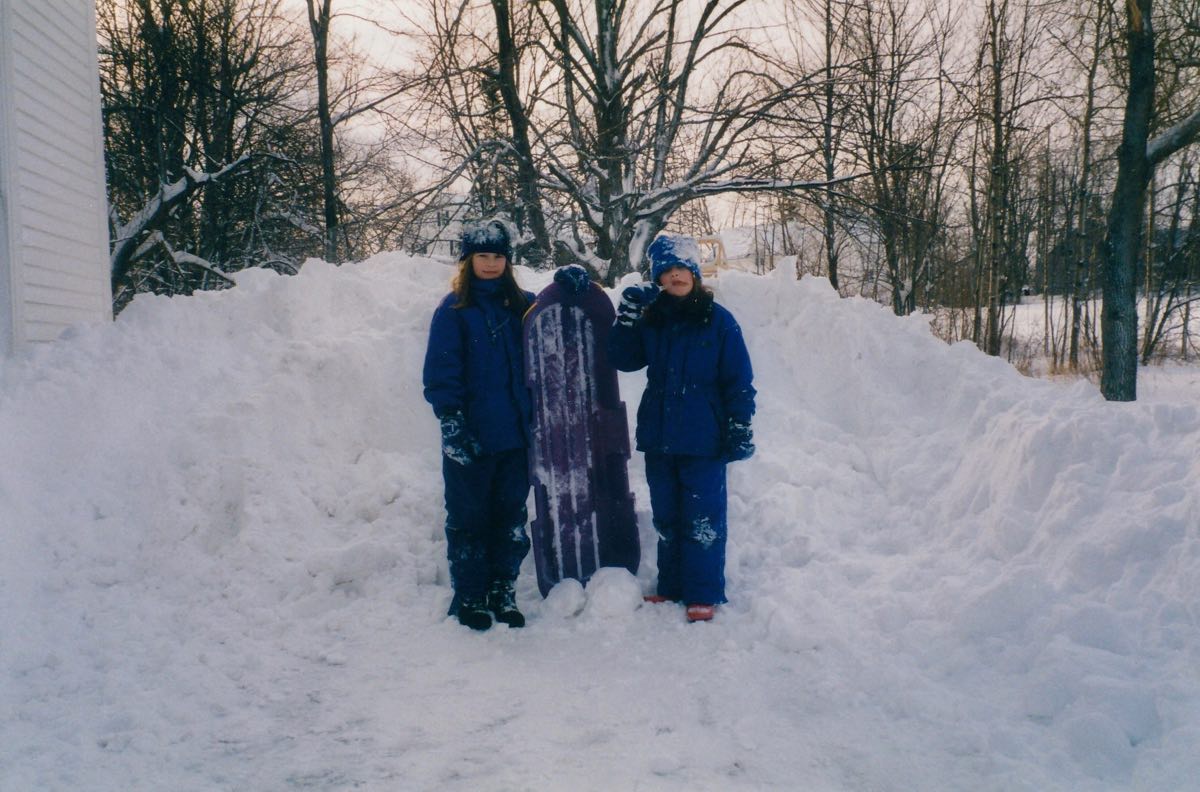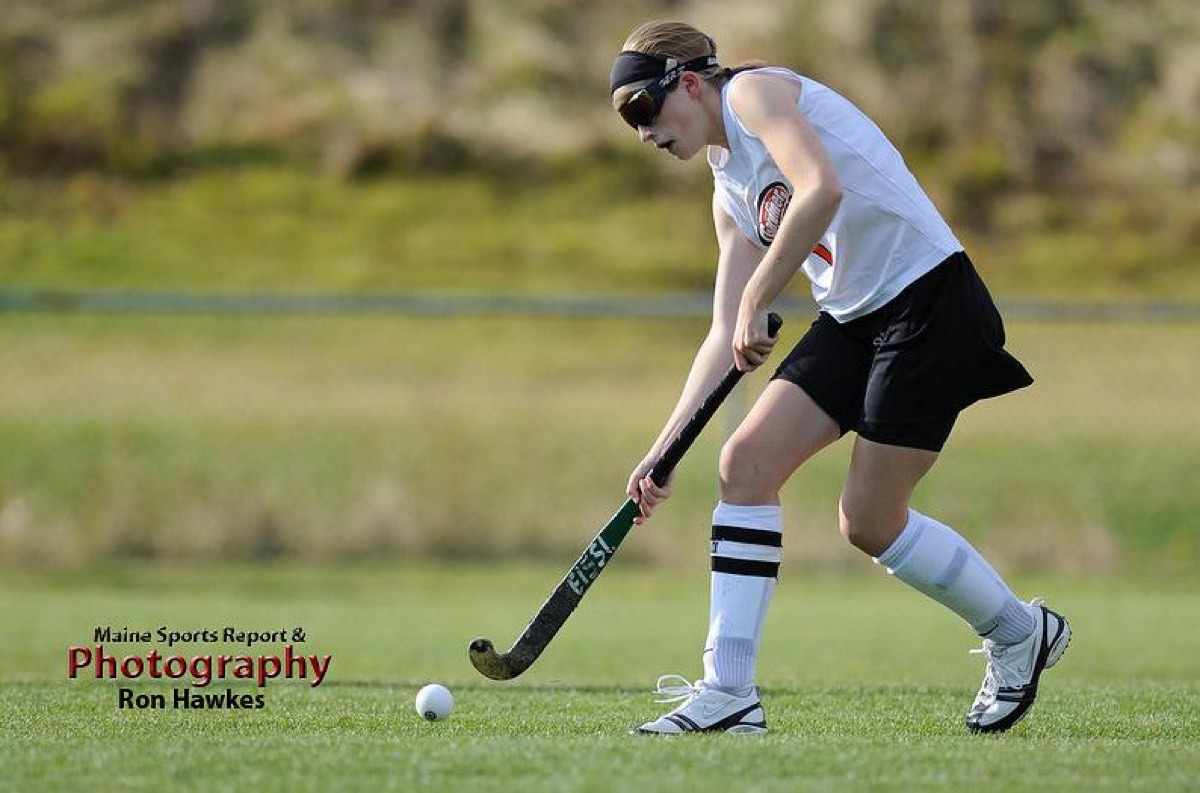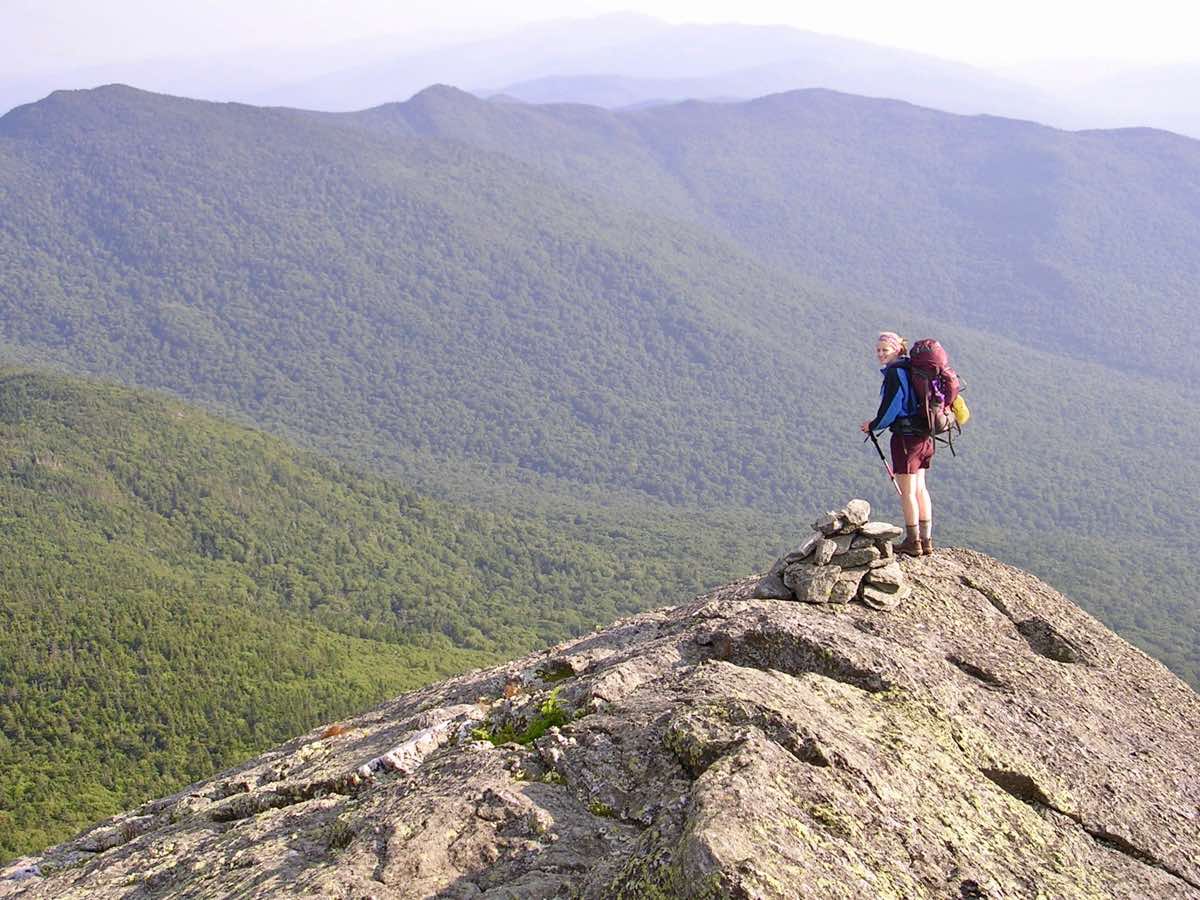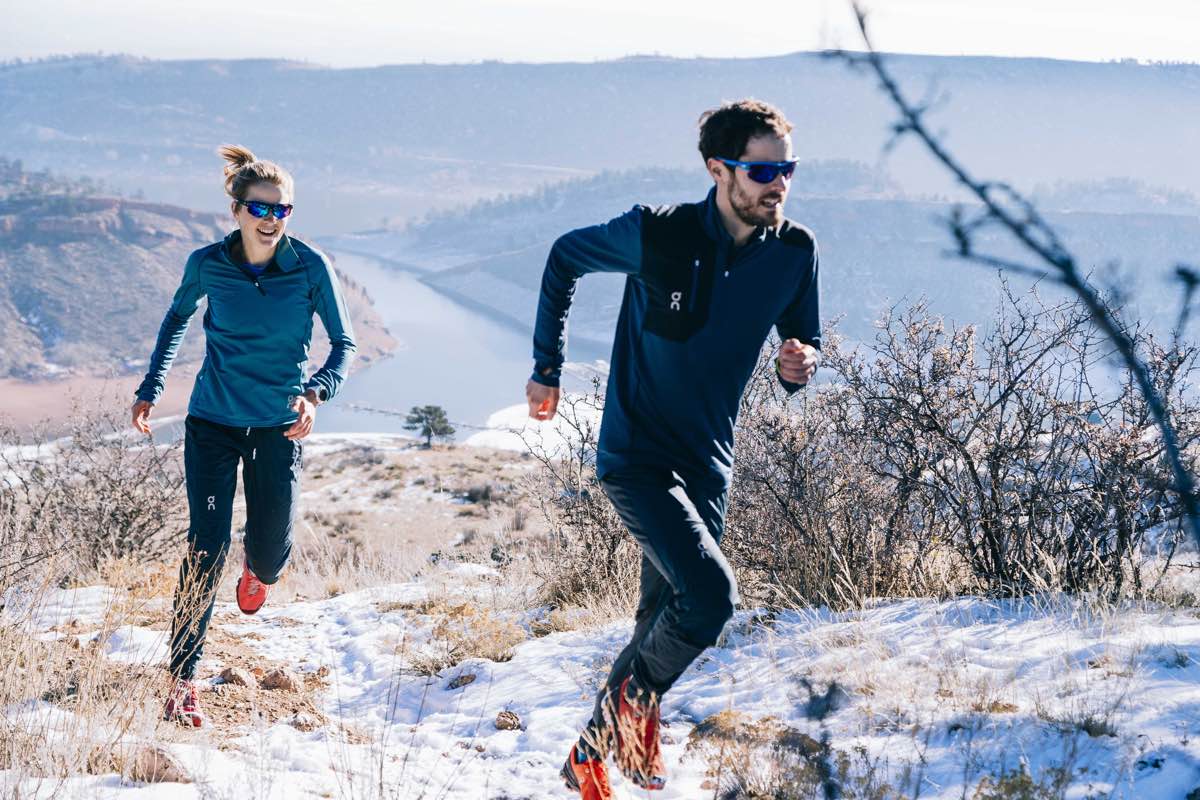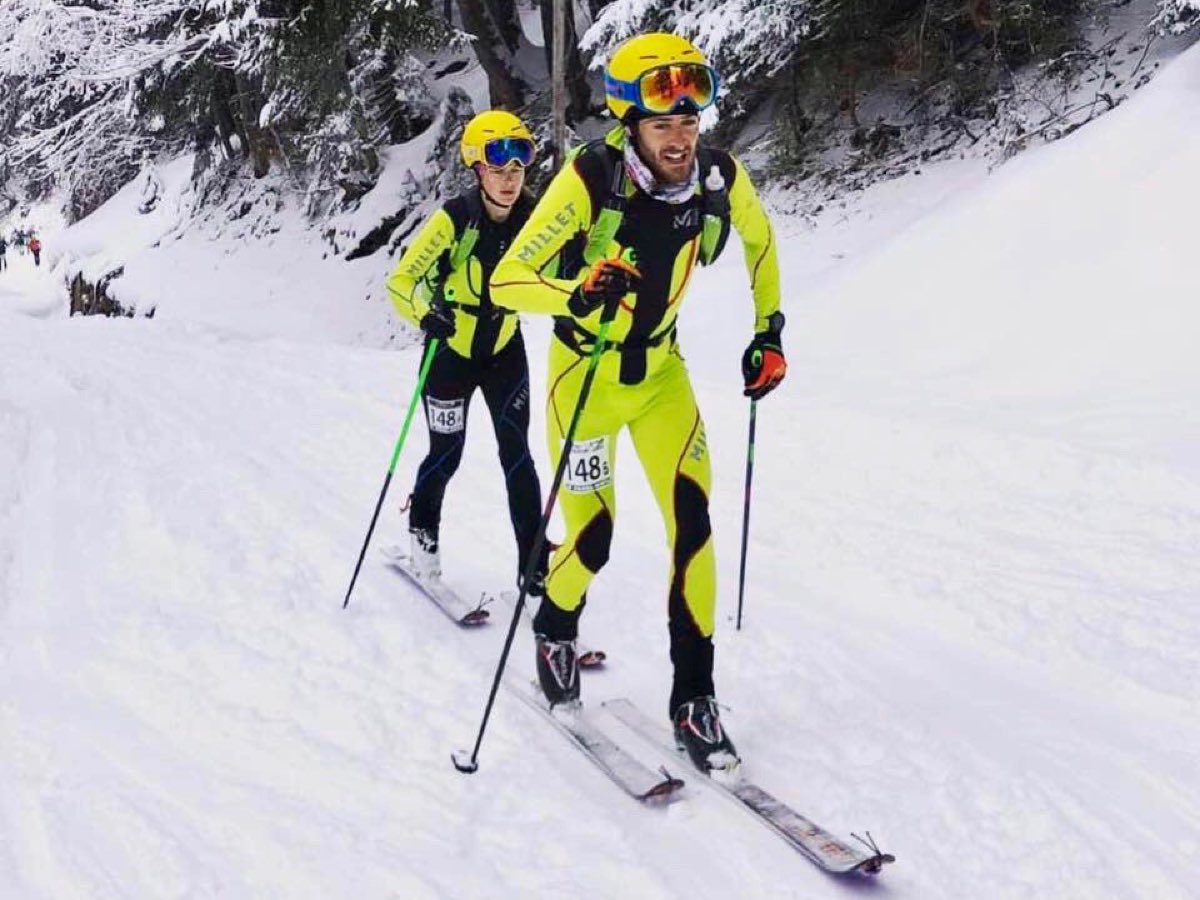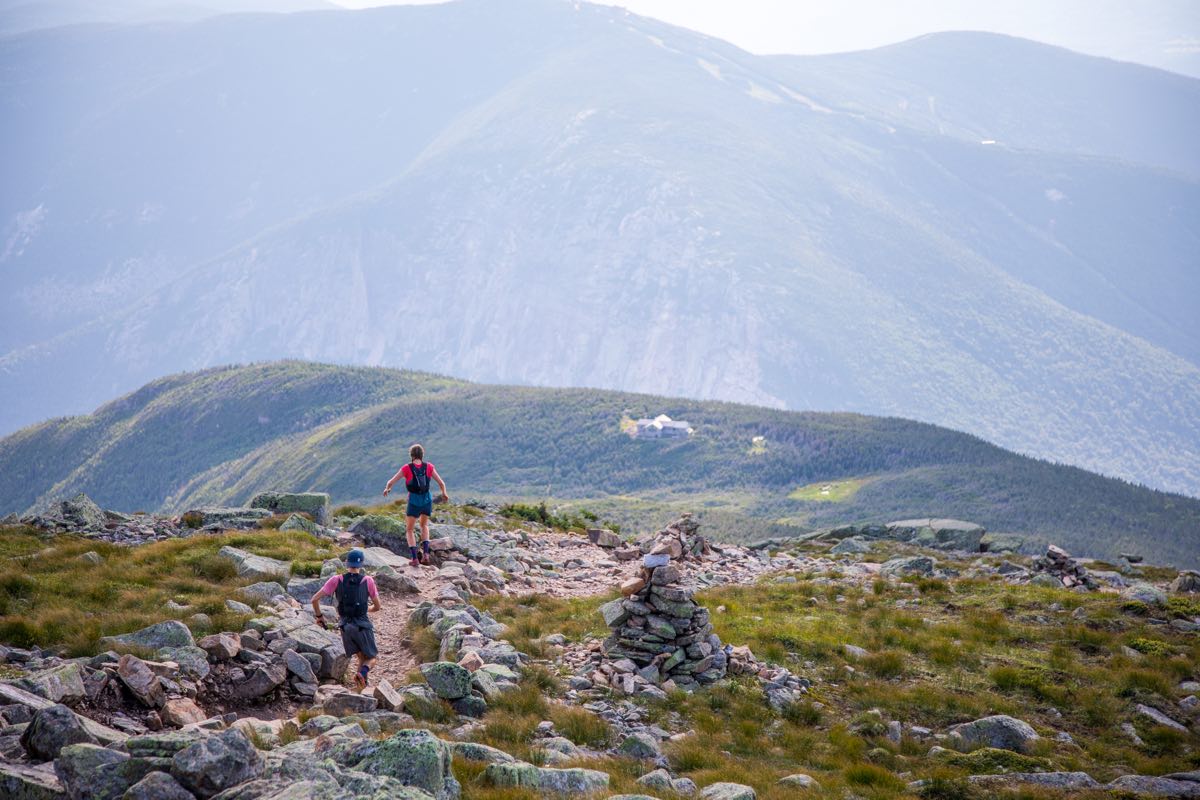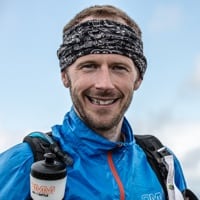According to the International Trail Running Association (ITRA), who are the USA’s top female trail runners? Most of us would guess the first two, Courtney Dauwalter and Camille Herron, while third-placed Megan Kimmel has been crushing skyraces and similar in Europe for a decade. But just three ITRA points behind Kimmel is a name most Americans weren’t familiar with until quite recently: Katie Schide.
This year the 27 year old placed sixth at the world’s most competitive trail ultramarathon, UTMB, what was also her first 100-mile race. She’s also recently won the prestigious Mont-Blanc 90k and MaXi-Race Annecy, and placed second at the competitive CCC and tough Madeira Island Ultra-Trail (MIUT). So who is this woman barely known in her homeland but tearing it up across the Atlantic Ocean?
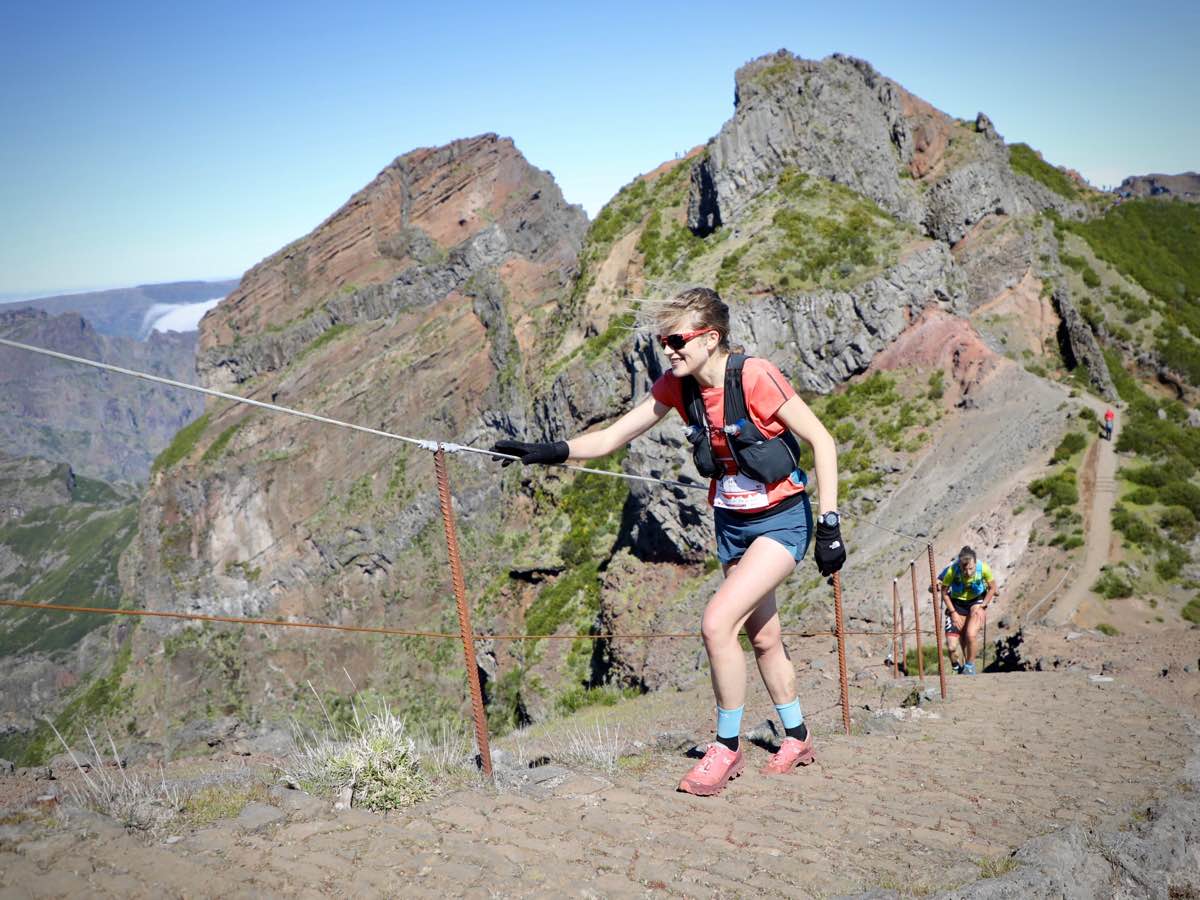
Katie Schide on her way to taking second at the 2019 Madeira-Island Ultra Trail. Photo: iRunFar/Meghan Hicks
Katie grew up in Gardiner, Maine. “It’s a classic, small American town. It’s not mountains, but remote and rural,” she says. Her mom and dad, Patricia and John, are both outdoorsy. “They were always taking us outside and I hiked a lot with my dad. I played every single sport we had in town. I was playing two sports per season; soccer on Tuesdays and Thursdays, and field hockey Monday, Wednesday, and Sunday. I just wanted to always be doing things. On the days I didn’t have practice I’d be at catching practice for softball or playing basketball with friends. My parents supported [my sister Annie and I] in every activity we wanted to do–they spent so much time driving us between practices and games. But they were never caught up in our results and never pushed me to do anything.”

Katie in the driveway of her Gardiner, Maine home. All images courtesy of Katie Schide unless otherwise noted.
By the end of middle school, she was seriously good at field hockey. “I’d go right from my school-team season into a winter club team, with girls from the whole state as part of a USA Field Hockey training program. Then in the spring I’d also be on an indoor team with school friends. I really liked it and made great friends.” You’ll notice that word comes up a lot, ‘friends.’
She was also pretty motivated. “I was fine getting up at 5:30 a.m. on the weekends to drive to practice [on a development program]. I would play hockey for six hours, go to Subway for two hours and do my Latin homework, and then go back and do my club hockey practice for two hours.”
Backcountry trips were equally formative. With her dad she backpacked the 272-mile Long Trail over three high-school summers. On other trips she also experienced the Appalachian Mountain Club White Mountains Huts and their crews. “They seemed to be having so much fun. And I remember seeing a woman carrying a guy on a wooden packboard and thinking, I want to be that strong!”
Katie studied Geology at Middlebury College in Vermont. “My first class was outside. All of our labs were outside, hiking around, looking at things. No one was complaining in the downpour and all the people were fun to be around.”
She continued with hockey initially, but “sort of grew out of it,” replacing it with ultimate frisbee, hiking, and kayaking. Oh and running: “We were so busy at college with work and homework that the only time I had to catch up with friends was on a run. So we’d go run for 45 minutes and just chat.”
Katie wasn’t new to running. She’d been on a summer track program in sixth grade, and she ran track in middle school and indoor track at high school. “I ran the 800 meters and thought I was really an endurance athlete–two laps [around the track]! I wasn’t bad at it, but I wouldn’t describe myself as really good at it either. Our training wasn’t that structured; we were just jogging around. I did it more for fun.”
When her first year at college turned into summer, Katie was still thinking about those mountain huts. In 2011 she took a job working in the White Mountains or ‘Whites.’ The crews, or ‘croos,’ used wooden packboards with leather straps, nicknamed ‘torture boards’, to carry 40 to 80 pounds of food and equipment. “There was a lot of physical labor. My college experience was very intense intellectually, so going from that to intensive physical labor was really relaxing in a funny kind of way. The huts were like a second home. I think my whole interest in trail running really started from there.”

On a family hike in Maine and eating cookies. (Early ultramarathon training?)
The eight-hut system, which is spread over 52 miles bearing 15,000-plus-feet of elevation gain and perpetually rocky terrain, forms an informal challenge known as the White Mountains Hut Traverse, to be completed in under 24 hours. “I thought it was totally crazy and impossible… at first,” she says. Katie hadn’t run any further than 10 miles, but the idea gestated and toward the end of summer, aged just 19, she had a go.
“I wore really old shoes and the bottoms of my feet were bruised,” she remembers. “I was grabbing trees to reduce the weight on my feet and my arms hurt so badly from doing that. And my feet were huge and I couldn’t put any shoes on that would fit me.” She got through the route inside 24 hours. “The worst bit was that I had one day off then was back to work. I was carrying 50 pounds of food to my hut, hiking out in someone else’s shoes, it was horrible. I was in so much pain. But that feeling of accomplishment…. When you get to a race finish it’s pretty rare you feel really great, but soon after you’re signing up for another race.” Katie would do the Hut Traverse twice more over the next two summers.
After college Katie moved to Salt Lake City, Utah, after an opportunistic email to the University of Utah led to a master’s-degree placement. “But it wasn’t the sole purpose of moving there. It was more about the classic move-West thing, see some different mountains, go skiing.”
Utah’s trails were different. “I was like, ‘I don’t have to hike, I can run, I know how to run!’ I transitioned into trail running–and I heard about the Speedgoat 50k. I needed something to replace the Hut Traverse as my summer goal. Speedgoat was it.”
In preparation she ran the 28-mile 2015 Logan Peak Trail Run. And won. “I remember passing the woman who had been first and thinking, This is so crazy. Looking back, maybe my memory plays tricks, but I think I remember someone drawing a chalk line on the road and going, ‘Okay, 3, 2, 1… go.’ And that was it. Some eight-year-old boy handed me a mug at the finish line. Races in Europe are so different from what I experienced in the U.S.”
Crucially, she had also really enjoyed the training. “I started making a training calendar. I enjoyed the process, running with different people and finding new places to run–I was new in Utah and it gave me an excuse to explore. At Speedgoat I didn’t win or anything [she placed seventh], but I really liked the atmosphere and having an excuse to push yourself. I got the bug.”
Next she won Antelope Island 50k and placed second at Moab Red Hot 55k, but in April 2016 she got an offer to enter a PhD program at the prestigious Swiss Federal Institute of Technology (ETH Zürich) in Switzerland. Again it was semi-serendipitous. An unsuccessful PhD application had been passed on and someone else unexpectedly got in touch. “I was never someone who always wanted to do a PhD, but this opportunity came along, to study in Switzerland with field work in Nepal. I loved Salt Lake City, but I thought, Either I move now or I’m here for good.”
It was pretty isolating at first, she says. “I like having friends. But I’m not someone who needs to have people around them all the time. I like hanging out with myself sometimes too. I thought, I’ll make friends eventually, so right now I’ll do the touristy things others might not want to do. So I went to Zermatt and ran to the hut at the base of the Matterhorn and things like that. I really enjoyed those weekends.”
It just so happened that a fellow Middlebury alumna, who’d also worked in the Whites huts and was a rather fine mountain runner herself, Hillary Gerardi, was living in nearby Grenoble, France. They had lots of mutual friends and Hillary’s husband enjoyed similar research interests and even worked with some of the same academics Katie had. She went to visit them and Hillary signed them both up for the Verticale du Grand Serre, which at just 1.8k is the shortest and steepest vertical-kilometrer race in the world. “It was horrible!” laughs Katie.
Hillary’s 30th birthday soon followed, which naturally coincided with Italy’s Limone Extreme Skyrace. “The start line was a shock,” remembers Katie. “It was like a party. There were so many people–all over the course! And everyone was super well dressed and everything was matching. Everyone looked like a professional runner. It was so exciting to be around all these people who were so excited about the sport. I was way underdressed. So I went right to the back and got completely stuck! Afterward there was a party and free pizza.”
She also met a charming, guitar-playing, French trail runner by the name of Germain Grangier. “That’s when everything started,” she says. Germain helped fuel her motivation, as a coach, romantic partner, and running partner. “I was talking to someone almost every day about running. It was really reassuring to have someone to call–both of them–who wanted to do the same things as me all the time.”
Katie and Germain both ultimately wanted to move to longer races. But gradually. They did the three-day partner trail race Pierra Menta Eté together. “I thought, Oh my god, this is terrifying. When you’re running with someone faster than you, who knows your limits more than you do, you learn how to manage a race and about your racing speed. There’s literally someone there pulling you along! So you can’t just slow down when you want to. You’re like, ‘I just did that, that’s crazy.’”
They won. “We were beating some men’s teams people maybe didn’t expect us to beat. That was a big turning point for me. That’s when the French noticed me.”
In 2017 Katie did six European races, including the Zegama Marathon, Glen Coe Skyline (fifth), and Les Templiers (sixth). “Every time I finished I would be blown away with myself and Germain would be like “Yeah, that’s what I expected.’ All along he knew I could be fast.”
Things really took off in 2018, with wins at Trail des Balcons d’Azur, Pierra Menta Eté (again, but with Hillary this time), MIUT’s 84k race, MaXi-Race and, most prestigious of all, a second place at CCC. “I have wonderful memories from that race. Germain and I spent a week in Chamonix, France that summer, running the course, so I felt like I really knew it during the race. The weather was perfect for me–cold, foggy drizzle, which helped me feel at home. I made a point of staying positive all day.”
The year 2019 has been even more successful, starting with a second place (behind Dauwalter) at the full MIUT, a win at the Mont-Blanc 90k, and sixth place at UTMB, her 100-mile debut. “One hundred miles isn’t just 100k with another 60k added on!” she chuckles. “I have lots of feelings about the race. I’ve been trying to think about what happened. Normally in races you have highs and lows and it all kind of comes together in the end and you feel okay. But I really didn’t have that experience.”
“I was having a lot of fun at the beginning. It was way crazier than I imagined–Saint Gervais [at 21k into the race] was totally insane. I felt like a gladiator in the Colosseum. But after that I had a really hard time and continued to have a really hard time until I got back to Chamonix. Before UTMB, I’d only had good races. I’m really proud that I finished, because I’d never felt like that before.”
“Part of what makes UTMB so crazy is how much build-up there is. By the time we started, I felt like I’d already done a race. Everything’s about UTMB. That’s what makes it cool. But it’s exhausting. In my head I talked about it so much I thought I knew what it would be like, but really I had no idea. I think I cared too much in the beginning. By Courmayeur I was just emotionally wrecked. I’m not someone who wants to only race hundreds. But I want to run UTMB again–and maybe the Western States 100.”
Germain also had a great UTMB this year, tying for ninth place, which makes the idea they’re the sport’s new power couple a little more convincing. “Because we’re doing the same races, we’re doing almost the same training. Sometimes it’s annoying to live with your coach. You want to run 20 minutes extra, but they say no! But it’s really cool to finish a race and celebrate together. This year at UTMB I was having some hard moments, but I kept hearing he was doing great and that was really nice to hear.”
But before UTMB, back in July, she had perhaps an even more meaningful result, a fastest-known-time (FKT) outing on the White Mountains Hut Traverse. “Originally my friend Megan [Farrell] had the White Mountain Hut Traverse FKT, so I felt weird about doing it. But I was just randomly checking her time and I saw someone else had the record. So I was like, ‘Ah, okay!’” [Between Megan and Katie each setting an FKT respectively in 2017 and 2019, Kristina Folcik held the FKT for 11 months.]
Kristina’s time to beat for the women’s FKT was 14 hours and 28 minutes. With Germain joining her and her family and many old friends cheering her on from the huts en route, Katie ran the route in a new record of 12:23, bringing the record back home to the huts croo. “The day was perfect. It’s having another thing to share with hut crew. It’s kind of something you share with other people.”
Call for Comments (from Meghan)
Calling all Katie Schide stories! Leave a comment to share a story of running, racing, or otherwise adventuring with Katie.
